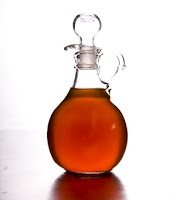Why?
Because the detergent is an emulsifier, and as such promotes the formation of emulsions.
An emulsion is a system consisting of two immiscible liquid phases (oil and water). We may have emulsions of oil in water (O / W: external aqueous phase) and water in oil (W / O: oily external phase).
The emulsion stability is ensured with use of emulsifying agents such as detergent, surface-active substances generally.
We will need:
- 3 transparent cups, glass or plastic,
- water, enough to fill two cups,
- cooking oil,
- food coloring,
- pencils.

- Fill one of the containers with water (2/3) and the other with the same amount of cooking oil;
- Add 3-5 drops of food coloring to each, leave some space between the drops so that they do not touch each other;
- What happens?
- Fill the third container with water up to 2/3, add some oil, enough to form a layer on top of the water.
- Add the food coloring the same way as in the previous point. Try to predict what will happen;
- What happens?
- With the sharp pencil touch a droplet of colorant of the third cup;

 When the food coloring is added to water, it blends completely with it.
When you add the same food coloring to the oil, a small sphere is formed
on oil surface.
When the food coloring is added to water, it blends completely with it.
When you add the same food coloring to the oil, a small sphere is formed
on oil surface.Why?
Water molecules are polar, in other words they have a small positive charge at one end and a small negative charge at the other, for this reason they remain together, by forming hydrogen bridges. Unlike water molecules, the oil molecules are non-polar - have no charge-, for this reason, the molecules of oil also tend to stick together.
When we "force" an oil to mix with a water based solution (the food coloring) those form an emulsion.
 A emulsifier it's a molecule with to different ends, one that loves water (hydrophilic) and a second that hates water (hydrophobic). Imagine a wood stick with two ends, one of them "sinks" in the oil- the hydrophobic end- the other in the water- hydrophilic end. This phenomena is responsible for the formation of small oil droplets -spheres- in the water. This is a stable structure and it's what we call emulsion, many things around us at home are emulsions like mayonnaise and face creams, for example.
A emulsifier it's a molecule with to different ends, one that loves water (hydrophilic) and a second that hates water (hydrophobic). Imagine a wood stick with two ends, one of them "sinks" in the oil- the hydrophobic end- the other in the water- hydrophilic end. This phenomena is responsible for the formation of small oil droplets -spheres- in the water. This is a stable structure and it's what we call emulsion, many things around us at home are emulsions like mayonnaise and face creams, for example.If you try to mix the jar 3 emulsion you will verify that after a while the oil will came back to the top..
When you use food coloring (FC), what happens is that the FC droplets drag a small amount of oil with them as a "coat", that's why the FC stop in the oil. the oil acts as a life saver coat, preventing the droplets to drawn. When you punch the droplets with the sharp pencil, the "oil coat" is broken and the FC- a water based solution- blends, almost immediately, with the water bellow the oil.
Go further
If you want to go further change the variables, one at time and take notes.
- Use different kitchen oil types;
- Use vinegar or any other kitchen liquid instead of FC.
Et voilá!
Now you can avoid your daily bath: "Mom I'm hydrophobic!"
Enjoy!


No comments:
Post a Comment